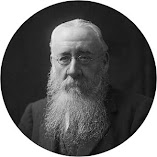Hello Gentle Readers - June 5, 2022
Hello Gentle Readers. We wanted to get back to the wine blog since we haven’t posted in a while.
We have been through several medical events that have kept us housebound for more than a month. For those of you who know about our trials, thanks for you support. None of this has been COVID-related, thank God, and we hope that we are through the worst of it and soon. June and July should see us enjoying greater mobility and verve to get back to visiting Virginia wineries. It’s encouraging that Kim is driving again and we are planning our normal summer trip to the Charlottesville area.
Being confined to the house has not been without some redeeming features. I’ve been able to do more reading in wine literature. Jamie Goode’s Guide to Wine: A Manifesto of Sorts (2020) was a wide-ranging survey of topics in more than 40 short essays, including “How to Succeed at Wine Writing by Writing Boring Articles.” I recognized there the formulaic structure to many wine posts, including some of my own, and resolved to be on the high alert against that approach in the future.
I read Eric Asimov’s How to Love Wine – A Memoir and Manifesto (2009). While I couldn’t relate to some of Mr. Asimov’s personal wine journey, I did appreciate his take on blind tastings (largely negative) and wine reviews where writers feel compelled to identify every possible primary, secondary, and tertiary aroma in a wine without conveying the sense of what the wine is like (again, largely negative). A layperson, such as myself, can understand how my hand works without being able to identify all 27 bones in the hand, much less all the ligaments, muscles, and nerves. From that, I think an approach to wine writing that focuses on body, acid, sweetness, alcohol, and tannin should be clearer. Maybe fruitiness, too for good measure, and finish if I’m drinking… .
I took up Mr. Asimov’s suggestion to look at wine writers of an earlier era, particularly George Saintsbury and his Notes on a Cellar-Book (1920 – University of California edition 2008). Here is a brief example from Mr. Saintsbury’s chapter on Claret and Burgundy:
Smith Haut Lafite, was unnoticed among the examples of those two curious years, ’88 and ’89. They “came up as a flower” and faded like one—but for freshness and passing pleasure of flavour and bouquet—for drinking at a draught—they were charming. Browning’s “A Pretty Woman” is the poem that reminds me most of them.
Of course, the “curious years ’88 and’89” are 1888 and 1889. But the point is made. This is elegance and substance all at once.
Mr. Saintsbury’s use of the term “claret” and “hock” for German wine, reminds me of a quote from my favorite hotelier, Basil Fawlty: “It's always a pleasure to find someone who appreciates the boudoir of the grape. I'm afraid most of the people we get in here don't know a Bordeaux from a claret!”
It seems to me that most earlier writers did not use a superabundance of adjectives but described wines as delicately perfumed, or having a racy flavor, or brilliant color, or fine aroma and spirit, and so on. See, André Jullien, The Topography of All the Known Vineyards – A Manual and Guide to All Importers and Purchasers in the Choice of Wine (1824); Cyrus Redding, History and Description of Modern Wine (3rd Ed 1860). That is not to say they totally avoided all fragrance descriptors, but they were much less in evidence. Admittedly, it may be harder to find a poem that captures a particular wine, or even a genre of poetry that does so. But it is harder to capture the spirit of a wine, a living thing, than it is to recite all of the fruit, minerals, and organic substances that can be perceived from your experience.


.jpg)

Comments
Post a Comment